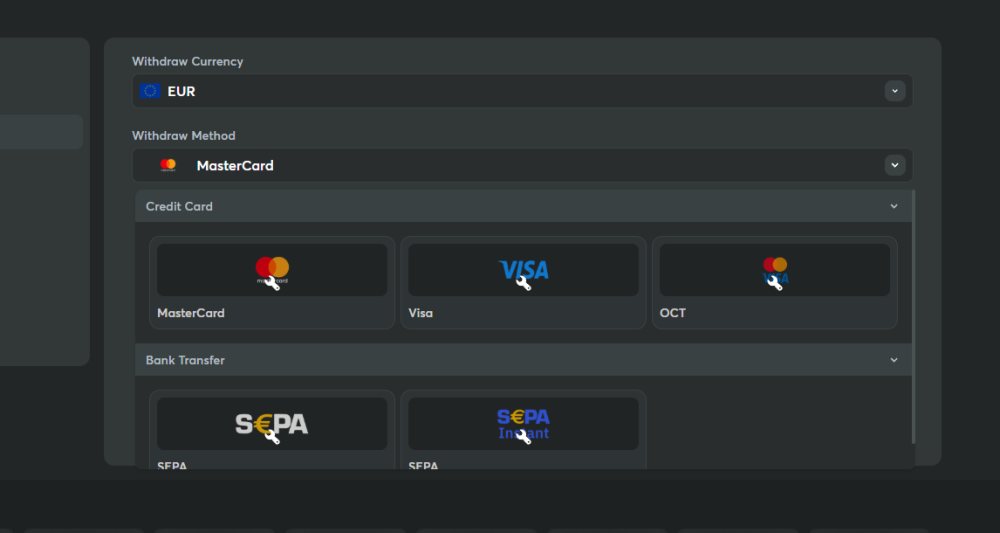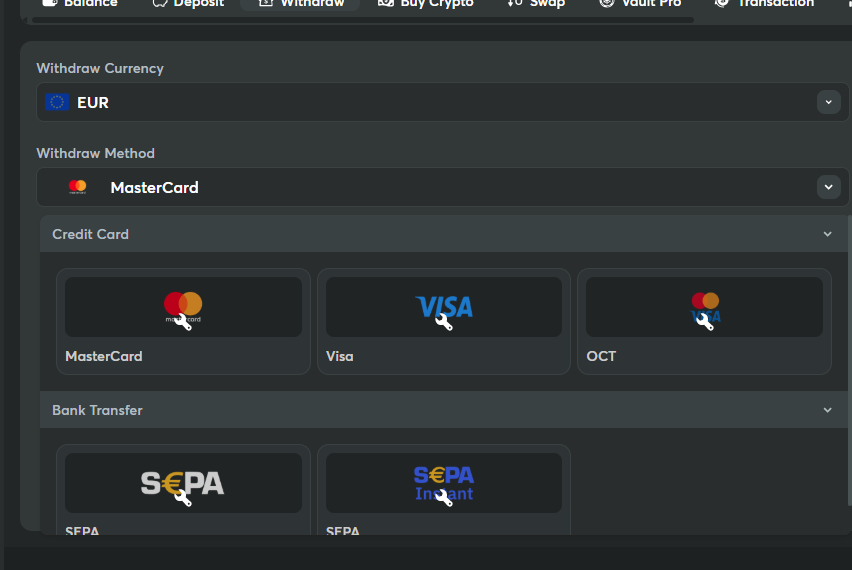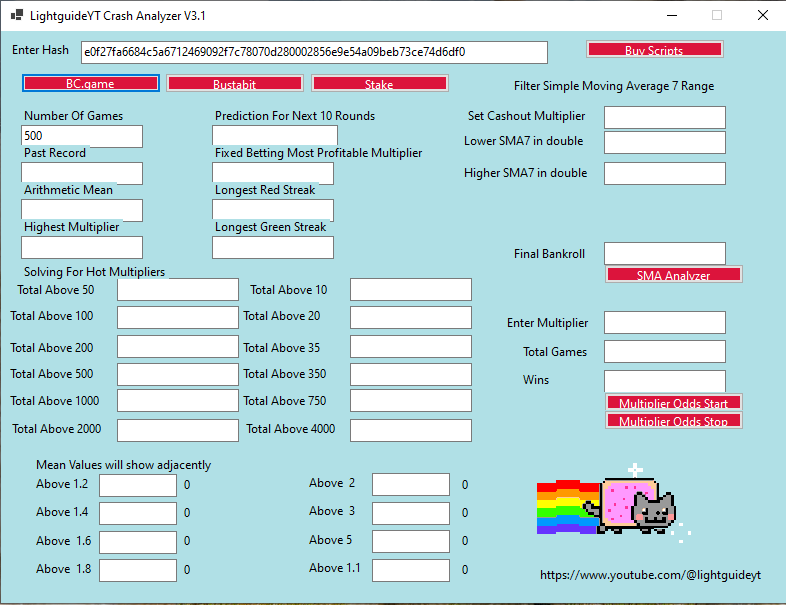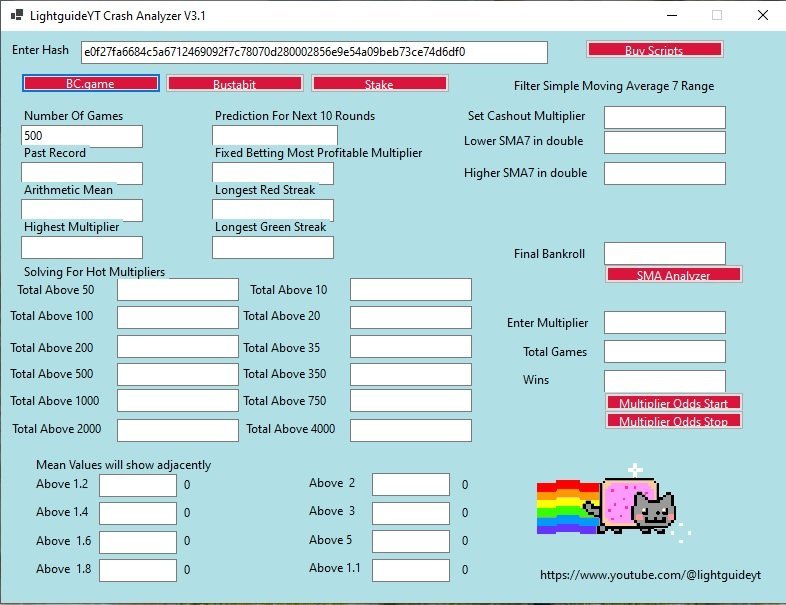All Activity
- Past hour
-
Emkvufzgyvcc joined the community
-
Man.u888 brings real casino excitement online with live dealers, smooth gameplay, and a wide range of popular table games and live slots designed for Asian players who want secure play, fast access, and real-time action anytime. Man.u888, Asia's biggest online casino, offers trusted banking, mobile support, and nonstop live gaming entertainment.
-
asiagaming joined the community
- Today
-
Lovely001 started following Site & Forum Updates
-
Lovely001 joined the community
- Yesterday
-
Marekk666 started following withdrawl maintenance
-
-
Marekk666 joined the community
-
-
no way to get a reason for chat ban and no way to actually win .No rain or in fact an bonus no idea why im here to be honest
-
blesskidusa started following Neo Bank Solutions
-
Neo Bank Solutions (Coinexra) is a technology-driven digital banking system that offers smart, borderless, and efficient financial services by combining traditional banking features with modern fintech innovations. Unlike conventional banks, Coinexra operates online, allowing users to access services anytime and anywhere without visiting a physical bank.
-
blesskidusa joined the community
-
-
DavidVR joined the community
-
Enflfhhupxcc joined the community
-
☎9211479038 Delhi Call Girls Service in Gurgaon Noida & Ghaziabad Door Step Click Here Hi.. Delivery Indian, Punjabi & North East Best Quality Full Educated And Full Cooperative Independent Delhi Call girl , Call girl Services In (Delhi). Genuine Person Contact us Directly for Top Punjabi Call girls in Delhi Our VIP call girl in Delhi service open 24 Hours and 365 days in year we offer best Punjabi girls, college girls, models, North east girls, and housewife Indian and Manipuri Call girls available in All over DELHI NCR city for home and All star hotel with doorstep Delivery, Visit From Whatsapp ☞ https://wa.link/i6cso7 Booking High profile call Girl In Delhi I have best delhi call girl service of horny house Call girl, in our team Who can give massive escort serviceable pleasure to their client’s Our high profile Delhi Call girls are not only for serviceable pleasure they also give a girlfriend experience you can pay cash hand to hand. feel experience These experienced Call girl are from various cities of India and foreigner girls also available for your hungry needs all your choice to select the delhi escort as per your desire and we make sure you will enjoy every moment with lots of fun and excitement. Sexy Call girls In Delhi doorstep Delivery We provide Super Class Hot and sexy Call girls service, Indian Female Call girls Service, A to Z call girl and Mind For Free booking and find best call girl number please call and WhatsApp Me 9211479038 for delhi call girl number Satisfaction by Top Class Female Models in Delhi Gurgaon Noida NCR in Hotel 24hrs In Call and Out Call Service At Lowest Price. Book All Kind Female call girls in Delhi We Have Indian, Punjabi, Kashmiri, Northeast, Bengali, Every Type Call girls service available, who is Bold, Beautiful, Young, Soft Cute, Charming and sexy figure Female Call girls Available. we have Hygienic Full AC Neat and Clean Rooms Avail for in-call service and staff available for all Hotel for 24hrs in Delhi NCR. Escort In Delhi Free Booking with Doorstep Delivery We Provide Selected and New Females, Housewife Escort, PG Escort , College Escort , Office Escort , Foreigner Escort, Female Escort , Models escort, low rate delhi call girl In Delhi NCR 24 Hrs 3*/5*/7* Hotels, Guest House, Homes Door Step Service High Class Beautiful Model Call girl in Delhi; service call all type of Delhi local Punjabi, collage girl in Delhi. Ultimate Destination for finding a High Profile Independent Call girl in Delhi, Gurgaon, Noida ..!.Like You Feel 100 % Real Girl Friend Experience. We are top High Class Delhi Call girls Agency offering high quality services with discretion. our service Available for all People who want fulfill his fantasy. Agency have lots of girls working with us like students Russian, models, house wife, and much More We Provide girls for Short and full day and night for in-call and out-call service. Full Night Call Girl Service in Delhi for In call and outcall In-Call and Out-Call Service in Delhi NCR 3* 5* 7* Hotels Service in Delhi NCR 24 Hours Available in Delhi NCR Indian, Russian, Punjabi, Kashmiri Call girls Real Models, College Girls, House Wife, Also Available Short Time and Full Time Service Available Hygienic Full AC Neat and Clean Rooms Avail. In Hotel 24 hours Daily New Call girls Staff Available Minimum to Maximum Range Available. Contact advertiser: sexy Call girl In Delhi Call girls Provide In Delhi High Profile Models Offer Hot Girls Are You Looking Delhi VIP Personal Satisfaction Girls Friends, Hot Experiences With Call girls service Beautiful College Girls And 36 Size Big Boob House Wife In South Delh, Indian College, Nepali, Bengali, Chinese Hot Girls One Short Rs 2000 to 3000 Night Rs 8000 to 12000 Booking Any Time 24x7x365. we have All Type Escort Beautiful Younger Girls In Delhi, Delhi Russian Call girl In Delhi high Profile Call girl In Delhi Call girls Service In Delhi Delhi Sexy Call girls High Class Call girls Student Girls Call girl In Delhi Best Call girl service in NCR Aunty, Busty Models Call girl Available in Place : all Delhi and NCR including South Ex, Nehru Place, Malviya Nagar, Munirka, Vasant Kunj, Safdarjung, Katwaria Sarai, Lajpat Nagar, Kalkaji, Hauz Khas, Mahipalpur, Karol Bagh, and all places in Delhi and NCR for in call and Out Call Hotel Service In Delhi also available. Price List Call girl Service PriceIndian call girlFull Night 10000 ₹Panjabi call girlOne session 3000 ₹Panjabi call girlFull Night 12000 ₹Russian call girlOne session 6000 ₹Russian call girlFull Night 25000 ₹Manipuri modelsOne session 2000 ₹Manipuri ModelsOne Night 8000 OUR SERVICES A-Level (5 star Call girls) Strip-tease BBBJ (Bareback Blowjob) Spending time in my rooms BJ (Blowjob Without a Condom) COF (Come On Face) Completion (Oral to completion) BJ non Covered (non Covered blowjob Without a Condom) DATY (Dinner At The Y) DSL (Dick Sucking Lips) DT (Dining at the Toes English Spanking) Doggie (Call girls service style from behind) Sandwich service S-GFE (Special Girl Friend Experience) HJ (Hand Job) Special Call girls O-Level (Oral Call girls service) 69 (69 Call girls service) BJ (Blowjob Without Condom) GFE (Girl Friend Experience) CBJ (non Covered Blow Job Oral Call girls service with a non Condom) COB (Come On Body) Extra ball (Have Call girls service many time Doorstep Delivery service in Delhi Hotels Crowne Plaza Hotel Okhla • Hotel Dee Marks Mahipalpur • Hotel Hilton Gadana Inn Saket • Hotel Holida Inn Aerocity • Hotel Hyatt Regency Delhi • Hotel Ibis Aerocity • Hotel Lemon Tree Aerocity • Hotel Novotel Aerociry Pride Plaza Aerocity Hotel• Hotel Red Fox Aerocity • Hotel ShangriHotella’s — Eros Connaught Place • Hotel Taj Mahal, New Delhi • Hotel The Ashok Chanakypuri • Hotel The Lalit Connaught Place • Hotel The Lodhi New Delhi Escort Service In Famous Hotel In Delhi Vivanta By Taj Hotel Dwarka •Hotel The Leela Palace New Delhi •Hotel Jw Marriott Aerocity • Hotel Hotel Radisson Blue Marina Connaught Place • Hotel Andaz Delhi Aerocity • Hotel Itc Maurya, Hotel, New Delhi Le Meridien Hotel Connaught Place • Hotel Le Meridien Gurgaon • Hotel Metropolitan Connaught Place • Hotel Oberor New Delhi • Hotel Pullman Aerocity • Hotel Radisson Blue Dwarka • Hotel Roseate House Aerocity Shanti Palace Hotel Mahipalpur (delhi) • Hotel Sheraton Saket (Delhi)• Hotel The Grand Vasant Kunj (delhi) • Hotel The Leela Ambience Gurgaon • Hotel The Park Connaught Place Delhi) • Hotel The Westin Gurgaon • Hotel Welcome Dwarka Call Girls Service Location Aerocity Escort| Sarita Vihar Escort| Geeta Colony Escort| Shastri Nagar Escort| South Delhi Escort| Tilak Nagar Escort| AIIMS Escort| Ashok Nagar Escort| Ashok ViharEscort| Ashram Escort | Chanakyapuri Escort Service| Chandni Chowk Escort Service| Connaught Place Call girls| Daryaganj Escort Service| Defence Colony Escort Service| Delhi Cantt Escort Service| Dhaula Kuan Escort Service| Dilshad Garden Escort Service| Greater Kailash Escort Service | Greater Noida Call girls| Green Park Call girls| Hari Nagar Call girls| Hauz Khas Call girls| INA Call girls| Inderlok Call girls| Janakpuri Escort Service| Kalyanpuri Call girls| Karol Bagh Call girls| Kashmiri Gate Call girl| Lajpat Nagar Call girls| Laxmi Nagar Call girls| Lodhi Road Call girls| Mahipalpur Call girl| Mayapuri Call girls| Mehrauli Call girls| Model Town Call girls| Moti Nagar| Munirka Call girls| Naraina Call girls| Narela| Nehru Place Call girls| New Friends Colony Call girls| Okhla Call girls| Paschim Vihar Call girls| Patel Nagar | Pitampura Call girls| Punjabi Bagh Call girls| Samaipur Badli | Shahdara| Shalimar Bagh Call girls| South Ex Call girls| Subhash Nagar | Udyog Vihar| Vasant Kunj Call girls| Vasant Vihar Call girls| Vikaspuri Call girls| Zakhira| Bhikaji Cama Place Call girls| Bijwasan| Chattarpur Call girls| Chawri Bazar Call girls| Civil Lines Call girls | Dwarka Call girls| East Of Kailash Call girls| Gandhi Nagar Call girls| Govindpuri | Jhilmil | Kalkaji Call girls| Kamla Nagar Call girls| Kirti Nagar Call girls| Malviya Nagar Call girls| Mayur Vihar Call girls| Mukherjee Nagar Call girls| Patparganj Call girls| Rajouri Garden Call girls| RK Puram Call girl| Rohini Call girl| Russian Call Girls in NCR | Related link For you Verified call girls in Paharganj (Delhi) ☎9211479038☎ delhi at your doorstep 9211479038, Call Girls In Delhi, Delhi NCR Call Girls In Noida 9211479038 Call Girls In Gurgaon ☎9211479038 Call Girls In Ghaziabad 9211479038 high profile call girls in Gurgaon free Doorstep Delivery call girl in paharganj(delhi) Call Girls in gaur city noida call Girls in Ncr Najafgarh Call girls Noida Call girls ☞We Don’t Make Costumer We Make Relationship NOW CALL FOR ENJOY WITH NIGHT QUEEN ♡♡♡♡THANKS FOR VISITING♡♡♡♡ TIME WASTERS AND BARGAINERS ARE PLEASE EXCUSE,, WE RESPECT YOUR PRIVACY and SAFETY EXPECT THE SAME
-
☎9211479038 Delhi Call Girls Service in Gurgaon Noida & Ghaziabad Door Step Click Here Hi.. Delivery Indian, Punjabi & North East Best Quality Full Educated And Full Cooperative Independent Delhi Call girl , Call girl Services In (Delhi). Genuine Person Contact us Directly for Top Punjabi Call girls in Delhi Our VIP call girl in Delhi service open 24 Hours and 365 days in year we offer best Punjabi girls, college girls, models, North east girls, and housewife Indian and Manipuri Call girls available in All over DELHI NCR city for home and All star hotel with doorstep Delivery, Visit From Whatsapp ☞ https://wa.link/i6cso7 Booking High profile call Girl In Delhi I have best delhi call girl service of horny house Call girl, in our team Who can give massive escort serviceable pleasure to their client’s Our high profile Delhi Call girls are not only for serviceable pleasure they also give a girlfriend experience you can pay cash hand to hand. feel experience These experienced Call girl are from various cities of India and foreigner girls also available for your hungry needs all your choice to select the delhi escort as per your desire and we make sure you will enjoy every moment with lots of fun and excitement. Sexy Call girls In Delhi doorstep Delivery We provide Super Class Hot and sexy Call girls service, Indian Female Call girls Service, A to Z call girl and Mind For Free booking and find best call girl number please call and WhatsApp Me 9211479038 for delhi call girl number Satisfaction by Top Class Female Models in Delhi Gurgaon Noida NCR in Hotel 24hrs In Call and Out Call Service At Lowest Price. Book All Kind Female call girls in Delhi We Have Indian, Punjabi, Kashmiri, Northeast, Bengali, Every Type Call girls service available, who is Bold, Beautiful, Young, Soft Cute, Charming and sexy figure Female Call girls Available. we have Hygienic Full AC Neat and Clean Rooms Avail for in-call service and staff available for all Hotel for 24hrs in Delhi NCR. Escort In Delhi Free Booking with Doorstep Delivery We Provide Selected and New Females, Housewife Escort, PG Escort , College Escort , Office Escort , Foreigner Escort, Female Escort , Models escort, low rate delhi call girl In Delhi NCR 24 Hrs 3*/5*/7* Hotels, Guest House, Homes Door Step Service High Class Beautiful Model Call girl in Delhi; service call all type of Delhi local Punjabi, collage girl in Delhi. Ultimate Destination for finding a High Profile Independent Call girl in Delhi, Gurgaon, Noida ..!.Like You Feel 100 % Real Girl Friend Experience. We are top High Class Delhi Call girls Agency offering high quality services with discretion. our service Available for all People who want fulfill his fantasy. Agency have lots of girls working with us like students Russian, models, house wife, and much More We Provide girls for Short and full day and night for in-call and out-call service. Full Night Call Girl Service in Delhi for In call and outcall In-Call and Out-Call Service in Delhi NCR 3* 5* 7* Hotels Service in Delhi NCR 24 Hours Available in Delhi NCR Indian, Russian, Punjabi, Kashmiri Call girls Real Models, College Girls, House Wife, Also Available Short Time and Full Time Service Available Hygienic Full AC Neat and Clean Rooms Avail. In Hotel 24 hours Daily New Call girls Staff Available Minimum to Maximum Range Available. Contact advertiser: sexy Call girl In Delhi Call girls Provide In Delhi High Profile Models Offer Hot Girls Are You Looking Delhi VIP Personal Satisfaction Girls Friends, Hot Experiences With Call girls service Beautiful College Girls And 36 Size Big Boob House Wife In South Delh, Indian College, Nepali, Bengali, Chinese Hot Girls One Short Rs 2000 to 3000 Night Rs 8000 to 12000 Booking Any Time 24x7x365. we have All Type Escort Beautiful Younger Girls In Delhi, Delhi Russian Call girl In Delhi high Profile Call girl In Delhi Call girls Service In Delhi Delhi Sexy Call girls High Class Call girls Student Girls Call girl In Delhi Best Call girl service in NCR Aunty, Busty Models Call girl Available in Place : all Delhi and NCR including South Ex, Nehru Place, Malviya Nagar, Munirka, Vasant Kunj, Safdarjung, Katwaria Sarai, Lajpat Nagar, Kalkaji, Hauz Khas, Mahipalpur, Karol Bagh, and all places in Delhi and NCR for in call and Out Call Hotel Service In Delhi also available. Price List Call girl Service PriceIndian call girlFull Night 10000 ₹Panjabi call girlOne session 3000 ₹Panjabi call girlFull Night 12000 ₹Russian call girlOne session 6000 ₹Russian call girlFull Night 25000 ₹Manipuri modelsOne session 2000 ₹Manipuri ModelsOne Night 8000 OUR SERVICES A-Level (5 star Call girls) Strip-tease BBBJ (Bareback Blowjob) Spending time in my rooms BJ (Blowjob Without a Condom) COF (Come On Face) Completion (Oral to completion) BJ non Covered (non Covered blowjob Without a Condom) DATY (Dinner At The Y) DSL (Dick Sucking Lips) DT (Dining at the Toes English Spanking) Doggie (Call girls service style from behind) Sandwich service S-GFE (Special Girl Friend Experience) HJ (Hand Job) Special Call girls O-Level (Oral Call girls service) 69 (69 Call girls service) BJ (Blowjob Without Condom) GFE (Girl Friend Experience) CBJ (non Covered Blow Job Oral Call girls service with a non Condom) COB (Come On Body) Extra ball (Have Call girls service many time Doorstep Delivery service in Delhi Hotels Crowne Plaza Hotel Okhla • Hotel Dee Marks Mahipalpur • Hotel Hilton Gadana Inn Saket • Hotel Holida Inn Aerocity • Hotel Hyatt Regency Delhi • Hotel Ibis Aerocity • Hotel Lemon Tree Aerocity • Hotel Novotel Aerociry Pride Plaza Aerocity Hotel• Hotel Red Fox Aerocity • Hotel ShangriHotella’s — Eros Connaught Place • Hotel Taj Mahal, New Delhi • Hotel The Ashok Chanakypuri • Hotel The Lalit Connaught Place • Hotel The Lodhi New Delhi Escort Service In Famous Hotel In Delhi Vivanta By Taj Hotel Dwarka •Hotel The Leela Palace New Delhi •Hotel Jw Marriott Aerocity • Hotel Hotel Radisson Blue Marina Connaught Place • Hotel Andaz Delhi Aerocity • Hotel Itc Maurya, Hotel, New Delhi Le Meridien Hotel Connaught Place • Hotel Le Meridien Gurgaon • Hotel Metropolitan Connaught Place • Hotel Oberor New Delhi • Hotel Pullman Aerocity • Hotel Radisson Blue Dwarka • Hotel Roseate House Aerocity Shanti Palace Hotel Mahipalpur (delhi) • Hotel Sheraton Saket (Delhi)• Hotel The Grand Vasant Kunj (delhi) • Hotel The Leela Ambience Gurgaon • Hotel The Park Connaught Place Delhi) • Hotel The Westin Gurgaon • Hotel Welcome Dwarka Call Girls Service Location Aerocity Escort| Sarita Vihar Escort| Geeta Colony Escort| Shastri Nagar Escort| South Delhi Escort| Tilak Nagar Escort| AIIMS Escort| Ashok Nagar Escort| Ashok ViharEscort| Ashram Escort | Chanakyapuri Escort Service| Chandni Chowk Escort Service| Connaught Place Call girls| Daryaganj Escort Service| Defence Colony Escort Service| Delhi Cantt Escort Service| Dhaula Kuan Escort Service| Dilshad Garden Escort Service| Greater Kailash Escort Service | Greater Noida Call girls| Green Park Call girls| Hari Nagar Call girls| Hauz Khas Call girls| INA Call girls| Inderlok Call girls| Janakpuri Escort Service| Kalyanpuri Call girls| Karol Bagh Call girls| Kashmiri Gate Call girl| Lajpat Nagar Call girls| Laxmi Nagar Call girls| Lodhi Road Call girls| Mahipalpur Call girl| Mayapuri Call girls| Mehrauli Call girls| Model Town Call girls| Moti Nagar| Munirka Call girls| Naraina Call girls| Narela| Nehru Place Call girls| New Friends Colony Call girls| Okhla Call girls| Paschim Vihar Call girls| Patel Nagar | Pitampura Call girls| Punjabi Bagh Call girls| Samaipur Badli | Shahdara| Shalimar Bagh Call girls| South Ex Call girls| Subhash Nagar | Udyog Vihar| Vasant Kunj Call girls| Vasant Vihar Call girls| Vikaspuri Call girls| Zakhira| Bhikaji Cama Place Call girls| Bijwasan| Chattarpur Call girls| Chawri Bazar Call girls| Civil Lines Call girls | Dwarka Call girls| East Of Kailash Call girls| Gandhi Nagar Call girls| Govindpuri | Jhilmil | Kalkaji Call girls| Kamla Nagar Call girls| Kirti Nagar Call girls| Malviya Nagar Call girls| Mayur Vihar Call girls| Mukherjee Nagar Call girls| Patparganj Call girls| Rajouri Garden Call girls| RK Puram Call girl| Rohini Call girl| Russian Call Girls in NCR | Related link For you Verified call girls in Paharganj (Delhi) ☎9211479038☎ delhi at your doorstep 9211479038, Call Girls In Delhi, Delhi NCR Call Girls In Noida 9211479038 Call Girls In Gurgaon ☎9211479038 Call Girls In Ghaziabad 9211479038 high profile call girls in Gurgaon free Doorstep Delivery call girl in paharganj(delhi) Call Girls in gaur city noida call Girls in Ncr Najafgarh Call girls Noida Call girls ☞We Don’t Make Costumer We Make Relationship NOW CALL FOR ENJOY WITH NIGHT QUEEN ♡♡♡♡THANKS FOR VISITING♡♡♡♡ TIME WASTERS AND BARGAINERS ARE PLEASE EXCUSE,, WE RESPECT YOUR PRIVACY and SAFETY EXPECT THE SAME
-
Looking for call girls in Dehradun to make your nights truly memorable? Whether you’re visiting Dehradun for business, leisure, or you’re a resident looking to break the monotony, our Dehradun call girls offer the perfect mix of beauty, charm, and companionship. At Diya Verma Dehradun, we provide a wide range of high-profile independent Dehradun call girls and VIP companions, available 24/7 to satisfy your every desire. If you’re looking to spice up your evenings or spend a relaxing time with someone who understands you, our Dehradun call girls are the ideal choice. They are not only attractive but also intelligent and genuinely caring, making every moment with them unforgettable. Get discrete services of our girls with verified profiles available in 5* hotels 24/7. Book on WhatsApp or just call. Our agency is the most trusted and ideal, promising verified profiles of hotel-friendly girls.
-
diyaverma7 joined the community
-
Klhdygoqzwcc joined the community
-
My account level is 9, and I lost $200,000 in a single day. For the past 48 hours, no one from VIP customer support has contacted me. This is truly not an acceptable way to treat a customer, and management is also completely unresponsive.
-
somaro joined the community
-
We specialize in end-to-end white label digital banking solutions designed for fintechs, banks, MFIs, and financial institutions looking to launch or scale modern digital financial services. Our secure, customizable platforms support mobile banking, internet banking, digital wallets, payments, API integrations, and core banking connectivity. With enterprise-grade security, regulatory compliance support, and flexible branding options, we help businesses reduce time-to-market while delivering seamless customer experiences. Our solutions are built to scale, ensuring high performance, reliability, and compliance across global markets. Whether you are launching a new digital bank or upgrading existing infrastructure, Coinexra’s white label digital banking solutions empower you to innovate faster, lower operational costs, and stay competitive in the evolving financial ecosystem.
- Last week
-
hey guys. did anyone had this issue before? its been over 2 days and im trying to withdraw but all options are in maintenance for over 2 days. any solution?
-
BC.GAME’s Ultimate Christmas & New Year Giveaway!
Ram09637 replied to BCGame_Maxim's topic in VIP Challenges
98359981 -
4,23 $BCD Cocco Code valid For All players Lv
Ram09637 replied to Maximo_BCGAME1's topic in Sports Discussion
98359981 -

When will my VIP host be reinstated it’s been 8 months
1998Ak79 replied to Grifter4Life's question in Help / Feedback
I don’t think they will respond they took my host even with the wagered amount and blamed it on system error but my host even confirmed I had the required wager and I’m svip yet they haven’t fixed it yet. Plus my host submitted a ticket I submitted a ceo ticket and still no response from host or ceo and it’s still not fixed -
Okay so you lose big, you chase , you get greedy STOP 1. 26 percent win max in a day compound for ten days and your balance becomes 10x 2.Always collect bcd and small amounts and never play them your brain will become addicted to losing 3.listen stop no fuking slot games no fuking rigged jackpot games no wheel games no fuking coinflips 4.play crash only when crash predictor gives you signal to bet to get free demo download tinyurl.com/xubot or T.me/Xubotz msg 5. No big bets don't bet cents start from a 100 dollars in ten days 1000 dollars 6.in ten days 5000 dollars , then 20000 dollars then next ten ,100k dollars 500k dollars finally from 100k a mil Less than six months all loss recover This is not a joke U r mad u r greedy find the eye within find ur light don't stumble in darknes In darkness the more you run the harder you fall In light you walk and you reach targets automaticallly Quit doping change ur life it's in ur hands now Join our group we are all victims we will come out of this shit together I spent 10000hours dev and QA these fuking software tools 7 bet with a plan with a target T.me/Xubotz get started with the free bot msg me Download free bot and resources here tinyurl.com/xubotz You are warned go with a plan dont play scam original games or other rigged games only crash can pull u out this mess
-
- crash
- loss recover
-
(and 3 more)
Tagged with:
-
4,23 $BCD Cocco Code valid For All players Lv
HaylazKaptan replied to Maximo_BCGAME1's topic in Sports Discussion
-
☎9211479038 Delhi Call Girls Service in Gurgaon Noida & Ghaziabad Door Step Click Here Hi.. Delivery Indian, Punjabi & North East Best Quality Full Educated And Full Cooperative Independent Delhi Call girl , Call girl Services In (Delhi). Genuine Person Contact us Directly for Top Punjabi Call girls in Delhi Our VIP call girl in Delhi service open 24 Hours and 365 days in year we offer best Punjabi girls, college girls, models, North east girls, and housewife Indian and Manipuri Call girls available in All over DELHI NCR city for home and All star hotel with doorstep Delivery, Visit From Whatsapp ☞ https://wa.link/i6cso7 Booking High profile call Girl In Delhi I have best delhi call girl service of horny house Call girl, in our team Who can give massive escort serviceable pleasure to their client’s Our high profile Delhi Call girls are not only for serviceable pleasure they also give a girlfriend experience you can pay cash hand to hand. feel experience These experienced Call girl are from various cities of India and foreigner girls also available for your hungry needs all your choice to select the delhi escort as per your desire and we make sure you will enjoy every moment with lots of fun and excitement. Sexy Call girls In Delhi doorstep Delivery We provide Super Class Hot and sexy Call girls service, Indian Female Call girls Service, A to Z call girl and Mind For Free booking and find best call girl number please call and WhatsApp Me 9211479038 for delhi call girl number Satisfaction by Top Class Female Models in Delhi Gurgaon Noida NCR in Hotel 24hrs In Call and Out Call Service At Lowest Price. Book All Kind Female call girls in Delhi We Have Indian, Punjabi, Kashmiri, Northeast, Bengali, Every Type Call girls service available, who is Bold, Beautiful, Young, Soft Cute, Charming and sexy figure Female Call girls Available. we have Hygienic Full AC Neat and Clean Rooms Avail for in-call service and staff available for all Hotel for 24hrs in Delhi NCR. Escort In Delhi Free Booking with Doorstep Delivery We Provide Selected and New Females, Housewife Escort, PG Escort , College Escort , Office Escort , Foreigner Escort, Female Escort , Models escort, low rate delhi call girl In Delhi NCR 24 Hrs 3*/5*/7* Hotels, Guest House, Homes Door Step Service High Class Beautiful Model Call girl in Delhi; service call all type of Delhi local Punjabi, collage girl in Delhi. Ultimate Destination for finding a High Profile Independent Call girl in Delhi, Gurgaon, Noida ..!.Like You Feel 100 % Real Girl Friend Experience. We are top High Class Delhi Call girls Agency offering high quality services with discretion. our service Available for all People who want fulfill his fantasy. Agency have lots of girls working with us like students Russian, models, house wife, and much More We Provide girls for Short and full day and night for in-call and out-call service. Full Night Call Girl Service in Delhi for In call and outcall In-Call and Out-Call Service in Delhi NCR 3* 5* 7* Hotels Service in Delhi NCR 24 Hours Available in Delhi NCR Indian, Russian, Punjabi, Kashmiri Call girls Real Models, College Girls, House Wife, Also Available Short Time and Full Time Service Available Hygienic Full AC Neat and Clean Rooms Avail. In Hotel 24 hours Daily New Call girls Staff Available Minimum to Maximum Range Available. Contact advertiser: sexy Call girl In Delhi Call girls Provide In Delhi High Profile Models Offer Hot Girls Are You Looking Delhi VIP Personal Satisfaction Girls Friends, Hot Experiences With Call girls service Beautiful College Girls And 36 Size Big Boob House Wife In South Delh, Indian College, Nepali, Bengali, Chinese Hot Girls One Short Rs 2000 to 3000 Night Rs 8000 to 12000 Booking Any Time 24x7x365. we have All Type Escort Beautiful Younger Girls In Delhi, Delhi Russian Call girl In Delhi high Profile Call girl In Delhi Call girls Service In Delhi Delhi Sexy Call girls High Class Call girls Student Girls Call girl In Delhi Best Call girl service in NCR Aunty, Busty Models Call girl Available in Place : all Delhi and NCR including South Ex, Nehru Place, Malviya Nagar, Munirka, Vasant Kunj, Safdarjung, Katwaria Sarai, Lajpat Nagar, Kalkaji, Hauz Khas, Mahipalpur, Karol Bagh, and all places in Delhi and NCR for in call and Out Call Hotel Service In Delhi also available. Price List Call girl Service PriceIndian call girlFull Night 10000 ₹Panjabi call girlOne session 3000 ₹Panjabi call girlFull Night 12000 ₹Russian call girlOne session 6000 ₹Russian call girlFull Night 25000 ₹Manipuri modelsOne session 2000 ₹Manipuri ModelsOne Night 8000 OUR SERVICES A-Level (5 star Call girls) Strip-tease BBBJ (Bareback Blowjob) Spending time in my rooms BJ (Blowjob Without a Condom) COF (Come On Face) Completion (Oral to completion) BJ non Covered (non Covered blowjob Without a Condom) DATY (Dinner At The Y) DSL (Dick Sucking Lips) DT (Dining at the Toes English Spanking) Doggie (Call girls service style from behind) Sandwich service S-GFE (Special Girl Friend Experience) HJ (Hand Job) Special Call girls O-Level (Oral Call girls service) 69 (69 Call girls service) BJ (Blowjob Without Condom) GFE (Girl Friend Experience) CBJ (non Covered Blow Job Oral Call girls service with a non Condom) COB (Come On Body) Extra ball (Have Call girls service many time Doorstep Delivery service in Delhi Hotels Crowne Plaza Hotel Okhla • Hotel Dee Marks Mahipalpur • Hotel Hilton Gadana Inn Saket • Hotel Holida Inn Aerocity • Hotel Hyatt Regency Delhi • Hotel Ibis Aerocity • Hotel Lemon Tree Aerocity • Hotel Novotel Aerociry Pride Plaza Aerocity Hotel• Hotel Red Fox Aerocity • Hotel ShangriHotella’s — Eros Connaught Place • Hotel Taj Mahal, New Delhi • Hotel The Ashok Chanakypuri • Hotel The Lalit Connaught Place • Hotel The Lodhi New Delhi Escort Service In Famous Hotel In Delhi Vivanta By Taj Hotel Dwarka •Hotel The Leela Palace New Delhi •Hotel Jw Marriott Aerocity • Hotel Hotel Radisson Blue Marina Connaught Place • Hotel Andaz Delhi Aerocity • Hotel Itc Maurya, Hotel, New Delhi Le Meridien Hotel Connaught Place • Hotel Le Meridien Gurgaon • Hotel Metropolitan Connaught Place • Hotel Oberor New Delhi • Hotel Pullman Aerocity • Hotel Radisson Blue Dwarka • Hotel Roseate House Aerocity Shanti Palace Hotel Mahipalpur (delhi) • Hotel Sheraton Saket (Delhi)• Hotel The Grand Vasant Kunj (delhi) • Hotel The Leela Ambience Gurgaon • Hotel The Park Connaught Place Delhi) • Hotel The Westin Gurgaon • Hotel Welcome Dwarka Call Girls Service Location Aerocity Escort| Sarita Vihar Escort| Geeta Colony Escort| Shastri Nagar Escort| South Delhi Escort| Tilak Nagar Escort| AIIMS Escort| Ashok Nagar Escort| Ashok ViharEscort| Ashram Escort | Chanakyapuri Escort Service| Chandni Chowk Escort Service| Connaught Place Call girls| Daryaganj Escort Service| Defence Colony Escort Service| Delhi Cantt Escort Service| Dhaula Kuan Escort Service| Dilshad Garden Escort Service| Greater Kailash Escort Service | Greater Noida Call girls| Green Park Call girls| Hari Nagar Call girls| Hauz Khas Call girls| INA Call girls| Inderlok Call girls| Janakpuri Escort Service| Kalyanpuri Call girls| Karol Bagh Call girls| Kashmiri Gate Call girl| Lajpat Nagar Call girls| Laxmi Nagar Call girls| Lodhi Road Call girls| Mahipalpur Call girl| Mayapuri Call girls| Mehrauli Call girls| Model Town Call girls| Moti Nagar| Munirka Call girls| Naraina Call girls| Narela| Nehru Place Call girls| New Friends Colony Call girls| Okhla Call girls| Paschim Vihar Call girls| Patel Nagar | Pitampura Call girls| Punjabi Bagh Call girls| Samaipur Badli | Shahdara| Shalimar Bagh Call girls| South Ex Call girls| Subhash Nagar | Udyog Vihar| Vasant Kunj Call girls| Vasant Vihar Call girls| Vikaspuri Call girls| Zakhira| Bhikaji Cama Place Call girls| Bijwasan| Chattarpur Call girls| Chawri Bazar Call girls| Civil Lines Call girls | Dwarka Call girls| East Of Kailash Call girls| Gandhi Nagar Call girls| Govindpuri | Jhilmil | Kalkaji Call girls| Kamla Nagar Call girls| Kirti Nagar Call girls| Malviya Nagar Call girls| Mayur Vihar Call girls| Mukherjee Nagar Call girls| Patparganj Call girls| Rajouri Garden Call girls| RK Puram Call girl| Rohini Call girl| Russian Call Girls in NCR | Related link For you Verified call girls in Paharganj (Delhi) ☎9211479038☎ delhi at your doorstep 9211479038, Call Girls In Delhi, Delhi NCR Call Girls In Noida 9211479038 Call Girls In Gurgaon ☎9211479038 Call Girls In Ghaziabad 9211479038 high profile call girls in Gurgaon free Doorstep Delivery call girl in paharganj(delhi) Call Girls in gaur city noida call Girls in Ncr Najafgarh Call girls Noida Call girls ☞We Don’t Make Costumer We Make Relationship NOW CALL FOR ENJOY WITH NIGHT QUEEN ♡♡♡♡THANKS FOR VISITING♡♡♡♡ TIME WASTERS AND BARGAINERS ARE PLEASE EXCUSE,, WE RESPECT YOUR PRIVACY and SAFETY EXPECT THE SAME
-
☎9211479038 Delhi Call Girls Service in Gurgaon Noida & Ghaziabad Door Step Click Here Hi.. Delivery Indian, Punjabi & North East Best Quality Full Educated And Full Cooperative Independent Delhi Call girl , Call girl Services In (Delhi). Genuine Person Contact us Directly for Top Punjabi Call girls in Delhi Our VIP call girl in Delhi service open 24 Hours and 365 days in year we offer best Punjabi girls, college girls, models, North east girls, and housewife Indian and Manipuri Call girls available in All over DELHI NCR city for home and All star hotel with doorstep Delivery, Visit From Whatsapp ☞ https://wa.link/i6cso7 Booking High profile call Girl In Delhi I have best delhi call girl service of horny house Call girl, in our team Who can give massive escort serviceable pleasure to their client’s Our high profile Delhi Call girls are not only for serviceable pleasure they also give a girlfriend experience you can pay cash hand to hand. feel experience These experienced Call girl are from various cities of India and foreigner girls also available for your hungry needs all your choice to select the delhi escort as per your desire and we make sure you will enjoy every moment with lots of fun and excitement. Sexy Call girls In Delhi doorstep Delivery We provide Super Class Hot and sexy Call girls service, Indian Female Call girls Service, A to Z call girl and Mind For Free booking and find best call girl number please call and WhatsApp Me 9211479038 for delhi call girl number Satisfaction by Top Class Female Models in Delhi Gurgaon Noida NCR in Hotel 24hrs In Call and Out Call Service At Lowest Price. Book All Kind Female call girls in Delhi We Have Indian, Punjabi, Kashmiri, Northeast, Bengali, Every Type Call girls service available, who is Bold, Beautiful, Young, Soft Cute, Charming and sexy figure Female Call girls Available. we have Hygienic Full AC Neat and Clean Rooms Avail for in-call service and staff available for all Hotel for 24hrs in Delhi NCR. Escort In Delhi Free Booking with Doorstep Delivery We Provide Selected and New Females, Housewife Escort, PG Escort , College Escort , Office Escort , Foreigner Escort, Female Escort , Models escort, low rate delhi call girl In Delhi NCR 24 Hrs 3*/5*/7* Hotels, Guest House, Homes Door Step Service High Class Beautiful Model Call girl in Delhi; service call all type of Delhi local Punjabi, collage girl in Delhi. Ultimate Destination for finding a High Profile Independent Call girl in Delhi, Gurgaon, Noida ..!.Like You Feel 100 % Real Girl Friend Experience. We are top High Class Delhi Call girls Agency offering high quality services with discretion. our service Available for all People who want fulfill his fantasy. Agency have lots of girls working with us like students Russian, models, house wife, and much More We Provide girls for Short and full day and night for in-call and out-call service. Full Night Call Girl Service in Delhi for In call and outcall In-Call and Out-Call Service in Delhi NCR 3* 5* 7* Hotels Service in Delhi NCR 24 Hours Available in Delhi NCR Indian, Russian, Punjabi, Kashmiri Call girls Real Models, College Girls, House Wife, Also Available Short Time and Full Time Service Available Hygienic Full AC Neat and Clean Rooms Avail. In Hotel 24 hours Daily New Call girls Staff Available Minimum to Maximum Range Available. Contact advertiser: sexy Call girl In Delhi Call girls Provide In Delhi High Profile Models Offer Hot Girls Are You Looking Delhi VIP Personal Satisfaction Girls Friends, Hot Experiences With Call girls service Beautiful College Girls And 36 Size Big Boob House Wife In South Delh, Indian College, Nepali, Bengali, Chinese Hot Girls One Short Rs 2000 to 3000 Night Rs 8000 to 12000 Booking Any Time 24x7x365. we have All Type Escort Beautiful Younger Girls In Delhi, Delhi Russian Call girl In Delhi high Profile Call girl In Delhi Call girls Service In Delhi Delhi Sexy Call girls High Class Call girls Student Girls Call girl In Delhi Best Call girl service in NCR Aunty, Busty Models Call girl Available in Place : all Delhi and NCR including South Ex, Nehru Place, Malviya Nagar, Munirka, Vasant Kunj, Safdarjung, Katwaria Sarai, Lajpat Nagar, Kalkaji, Hauz Khas, Mahipalpur, Karol Bagh, and all places in Delhi and NCR for in call and Out Call Hotel Service In Delhi also available. Price List Call girl Service PriceIndian call girlFull Night 10000 ₹Panjabi call girlOne session 3000 ₹Panjabi call girlFull Night 12000 ₹Russian call girlOne session 6000 ₹Russian call girlFull Night 25000 ₹Manipuri modelsOne session 2000 ₹Manipuri ModelsOne Night 8000 OUR SERVICES A-Level (5 star Call girls) Strip-tease BBBJ (Bareback Blowjob) Spending time in my rooms BJ (Blowjob Without a Condom) COF (Come On Face) Completion (Oral to completion) BJ non Covered (non Covered blowjob Without a Condom) DATY (Dinner At The Y) DSL (Dick Sucking Lips) DT (Dining at the Toes English Spanking) Doggie (Call girls service style from behind) Sandwich service S-GFE (Special Girl Friend Experience) HJ (Hand Job) Special Call girls O-Level (Oral Call girls service) 69 (69 Call girls service) BJ (Blowjob Without Condom) GFE (Girl Friend Experience) CBJ (non Covered Blow Job Oral Call girls service with a non Condom) COB (Come On Body) Extra ball (Have Call girls service many time Doorstep Delivery service in Delhi Hotels Crowne Plaza Hotel Okhla • Hotel Dee Marks Mahipalpur • Hotel Hilton Gadana Inn Saket • Hotel Holida Inn Aerocity • Hotel Hyatt Regency Delhi • Hotel Ibis Aerocity • Hotel Lemon Tree Aerocity • Hotel Novotel Aerociry Pride Plaza Aerocity Hotel• Hotel Red Fox Aerocity • Hotel ShangriHotella’s — Eros Connaught Place • Hotel Taj Mahal, New Delhi • Hotel The Ashok Chanakypuri • Hotel The Lalit Connaught Place • Hotel The Lodhi New Delhi Escort Service In Famous Hotel In Delhi Vivanta By Taj Hotel Dwarka •Hotel The Leela Palace New Delhi •Hotel Jw Marriott Aerocity • Hotel Hotel Radisson Blue Marina Connaught Place • Hotel Andaz Delhi Aerocity • Hotel Itc Maurya, Hotel, New Delhi Le Meridien Hotel Connaught Place • Hotel Le Meridien Gurgaon • Hotel Metropolitan Connaught Place • Hotel Oberor New Delhi • Hotel Pullman Aerocity • Hotel Radisson Blue Dwarka • Hotel Roseate House Aerocity Shanti Palace Hotel Mahipalpur (delhi) • Hotel Sheraton Saket (Delhi)• Hotel The Grand Vasant Kunj (delhi) • Hotel The Leela Ambience Gurgaon • Hotel The Park Connaught Place Delhi) • Hotel The Westin Gurgaon • Hotel Welcome Dwarka Call Girls Service Location Aerocity Escort| Sarita Vihar Escort| Geeta Colony Escort| Shastri Nagar Escort| South Delhi Escort| Tilak Nagar Escort| AIIMS Escort| Ashok Nagar Escort| Ashok ViharEscort| Ashram Escort | Chanakyapuri Escort Service| Chandni Chowk Escort Service| Connaught Place Call girls| Daryaganj Escort Service| Defence Colony Escort Service| Delhi Cantt Escort Service| Dhaula Kuan Escort Service| Dilshad Garden Escort Service| Greater Kailash Escort Service | Greater Noida Call girls| Green Park Call girls| Hari Nagar Call girls| Hauz Khas Call girls| INA Call girls| Inderlok Call girls| Janakpuri Escort Service| Kalyanpuri Call girls| Karol Bagh Call girls| Kashmiri Gate Call girl| Lajpat Nagar Call girls| Laxmi Nagar Call girls| Lodhi Road Call girls| Mahipalpur Call girl| Mayapuri Call girls| Mehrauli Call girls| Model Town Call girls| Moti Nagar| Munirka Call girls| Naraina Call girls| Narela| Nehru Place Call girls| New Friends Colony Call girls| Okhla Call girls| Paschim Vihar Call girls| Patel Nagar | Pitampura Call girls| Punjabi Bagh Call girls| Samaipur Badli | Shahdara| Shalimar Bagh Call girls| South Ex Call girls| Subhash Nagar | Udyog Vihar| Vasant Kunj Call girls| Vasant Vihar Call girls| Vikaspuri Call girls| Zakhira| Bhikaji Cama Place Call girls| Bijwasan| Chattarpur Call girls| Chawri Bazar Call girls| Civil Lines Call girls | Dwarka Call girls| East Of Kailash Call girls| Gandhi Nagar Call girls| Govindpuri | Jhilmil | Kalkaji Call girls| Kamla Nagar Call girls| Kirti Nagar Call girls| Malviya Nagar Call girls| Mayur Vihar Call girls| Mukherjee Nagar Call girls| Patparganj Call girls| Rajouri Garden Call girls| RK Puram Call girl| Rohini Call girl| Russian Call Girls in NCR | Related link For you Verified call girls in Paharganj (Delhi) ☎9211479038☎ delhi at your doorstep 9211479038, Call Girls In Delhi, Delhi NCR Call Girls In Noida 9211479038 Call Girls In Gurgaon ☎9211479038 Call Girls In Ghaziabad 9211479038 high profile call girls in Gurgaon free Doorstep Delivery call girl in paharganj(delhi) Call Girls in gaur city noida call Girls in Ncr Najafgarh Call girls Noida Call girls ☞We Don’t Make Costumer We Make Relationship NOW CALL FOR ENJOY WITH NIGHT QUEEN ♡♡♡♡THANKS FOR VISITING♡♡♡♡ TIME WASTERS AND BARGAINERS ARE PLEASE EXCUSE,, WE RESPECT YOUR PRIVACY and SAFETY EXPECT THE SAME
-
Sandipermadi started following Coco_Father
-
Xin chào mọi người , hôm nay mình mới tạo tài khoản ở trang này , mình chưa biết cách chơi và sử dụng thế nào . Mong được mọi người chỉ dẫn . Mình đến từ VIỆT NAM ^^ Rất vui được làm quen với các bạn
-
https://tinyurl.com/xubotz/ download the bot
-
Without full sha256 analyzer you are toast get by telegram Xubotz free demo at tinyurl.com/xubotz Do you want to die doing coin flipping on trenball or maniac play on crash save yourself and your roll while there is time only run bots when fixed edge is obtained using analyzer and predictor it can solve 50k worh of records on milliseconds u will be toast without I have nothing to lose only showing the door













